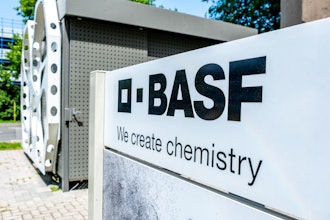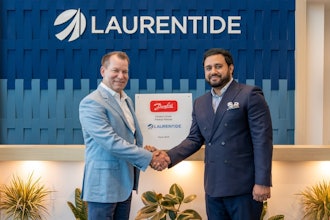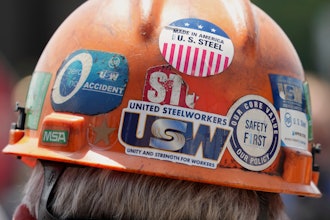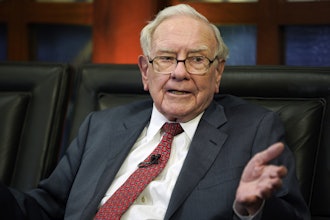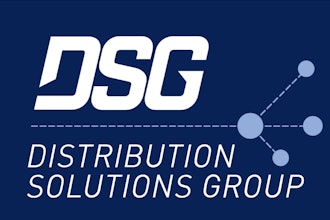
Earlier this week I took a day to volunteer at my children’s elementary school. It was their annual field day where students get to spend 1/2 of the school day outdoors, on the game field, participating in a rotation of team-building and fitness events. It’s a great deal of fun.
I was one of a great many parents that took the day to volunteer and to spend time having fun with all of the students. I highly recommend it to all of my readers.
There was one activity in particular that caught my attention, not just as an amusing behavioral observation, but because it was greatly reflective of truth in business. Grant me a few words to describe what I observed and then we can discuss how meaningful it was.
One of the events was a basic high jump apparatus, consisting of the fall-away bar that could be set at many heights above ground and a “pit” of crash pads on the landing side. Instead of taking turns jumping over the bar, the task was to get the entire class to successfully overtop the bar without knocking it off. If the entire class made it over, the bar would be set higher and a teacher overseeing the event took records of which class succeeded in over-topping the greatest height. Beyond that there were no real rules or limits.
My son’s class had a group leader (one of the dozens of high school student volunteers that got a day off from school to help out) that was very enthusiastic. He began basically holding out his hands like a stirrup and, for all intents and purposes, tossing students over the bar. Quickly, the other two high school volunteer leaders for his class and a wound-up parent joined in. Students also climbed on each other’s shoulders to leap off of peers and over the bar.
The supervising teacher simply ran to the back of the pit to help prevent students from travelling beyond the crash pads. That class won the day for that event without a close second. They got over the bar so quickly and so often they had time to re-set the bar to new heights, and to aggressive heights, many times.
Their aggressive approach enabled them to over-top settings many other classes didn’t come close to conquering. Of course, some of the parents squirmed at the potential for bumps and bruises and footprints to faces, but the students were screaming with glee and cheering so loudly you could hear them across the field. They were having too much fun and success. Anxious parents didn’t dare to try and stop them.
The very next class provided a stark contrast. Once they received instructions and rules and were told to go, they demonstrated a much more conservative approach to the puzzle. A few of the students tried to jump over the bar, but it started at a height none of them could possibly overcome alone (team efforts were the point of every exercise including this one).
One immediately apparent difference was the attitude of the high school volunteers leading this group. They didn’t join the students in solving the problem, they just watched. Additionally, the parents most engaged with the second class were much more anxious about self-respect and minor injury and steered students away from attempts to solve the challenge that included students climbing on other students. Flying through the air simply wasn’t going to happen in this group.
The second group was much more “risk averse.” It never did get the entire class over the first setting before it was time to rotate to another event.
I was an unlikely chance to see such polar opposites back-to-back. The phenomenon impressed me as something I had seen before; something I had seen over and over again in a professional context.
Those businesses or groups or teams that produce the most innovative or daring products and solutions are bold and daring of spirit. That spirit comes from the leaders and mentors that influence or drive the group’s behavior. The leaders and champions for the group demonstrate a spirit of adventure that infuses the entire group with energy and intent to succeed no matter the risk. Inevitably, even if they don’t succeed every time, even if they do make mistakes, they do succeed in spite of the risk.
I have had the privilege of working with or within a diverse set of product development and problem solving organizations. More so, I have visited and shared with even more organizations with even greater diversity of innovative spirit. In my experience and observation, those that successfully and repeatedly designed and developed truly innovative solutions were powered by bold and daring attitudes.
The organizations that were careful, deliberate, and averse to taking unnecessary risk rarely produced products or solutions that were new or different, even when they set out to do so. Inevitably, the character habit of minimizing risk drove designs away from being different and toward being something that the business knew, and could prove beforehand, that customers would buy.
That is not to say that the more cautious organizations didn’t have their strengths. Some produced superior quality and reliability because of their emphasis on proving products before launching them. Some rarely made design changes after launch because the product was carefully designed for long-term production, process optimization, and product performance.
The more innovative companies took much more risk. They often made design changes soon after launch to either improve performance or optimize production, or both. Many times they had little idea how well a product would sell when they launched it other a belief that it would succeed. Sometimes that belief was a single leader’s vehement demand that it was a great idea and customers would love it.
We all strive to meld the two ends of the spectrum together into a superpower innovation organization that is both innovative and riskless. We want to be that business that innovates truly sensational ideas and products, knows that we have dreamed up something successful before we spend a single dollar or euro, develops it quickly for optimal performance and productivity and flawless quality and reliability without wasting any money or time.
We all want to be that, and we should want to be that. But, we are fighting against the laws of the universe. It is difficult to be fast and flawless. Innovation and certainty don’t belong together. Bold adventure and rigorous discipline are like matter and anti-matter; if you try to stuff them both in the same bottle you get an explosion.
We have all learned that to do something right the first time we must either be lucky, be very careful and meticulous, or be really good. We don’t like to trust to luck, so we leverage method and process improvement to help us become very good. We want to be very good because then we can also be fast.
We have all felt the conflict of trying to do something new and different in an organization that is afraid to make a mistake. The discipline to do things in a particular way is inherently contrary to trying something new, hence my matter and anti-matter reverence. It’s one we know well.
However, the one that seems to be the hardest to accept is that we simply can’t know the success of an innovative idea ahead of time. It’s a complete gamble and always will be. That is because if something is truly innovative it is too different from anyone’s experience for a customer to say that they will like or appreciate it.
Sure, we can ask somebody if they would like their own personal jet pack, and we can expect an overwhelming “yes” response. Except, in reality, most people would not be comfortable flying one around (or paying for the insurance to go with it). Face it. We will never have customer data to prove that something truly innovative will succeed. We must simply believe it will succeed based on our own experiences and what we expect other people believe is good.
And so, innovative groups will, by necessity, be those that are willing to accept the risk and the adventure of now knowing until they try it. Those who are not afraid of a few crushed fingers, footprints in faces, or dizzying tumbles will fly higher and faster than those who prefer to ensure that no one gets hurt or embarrassed. On the flip side, those who are more cautious will escape the high-jump pit of innovation business without a scratch.
The debate should not be about which attitude is the right one. I’m simply proposing that we have yet to perfect the ultimate utopia of fast and flawless, bold and riskless, optimized and different, and so the laws of the universe prevail such that we cannot be both adventurously innovative and cautiously risk free. Therefore, we must choose our attitude.
So many of the businesses and groups I talk with want very much to be innovative, but possess an aversion to risk. If we want to be innovative we must be daring. It starts with the leaders and mentors that influence our behaviors. If they are cautious and concerned about a little waste or a few mistakes, we will be too. However, if they say, “what are you waiting for? Just try it,” we will do just that.
It’s simple. Innovation is as much attitude as it is skill or process. By all means, we should continue to become as good at what we do as we can. Being very good is the only way to get close to that utopia of being everything all at once. In the mean time, we must choose the attitude we need to be what we really want.
Stay wise, friends.
If you like what you just read, find more of Alan’s thoughts at www.bizwizwithin.com












